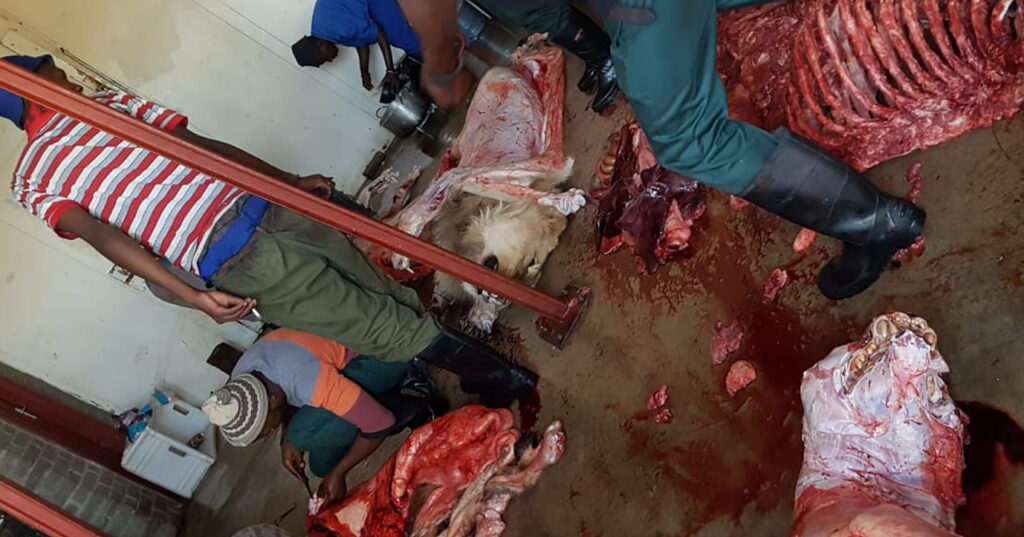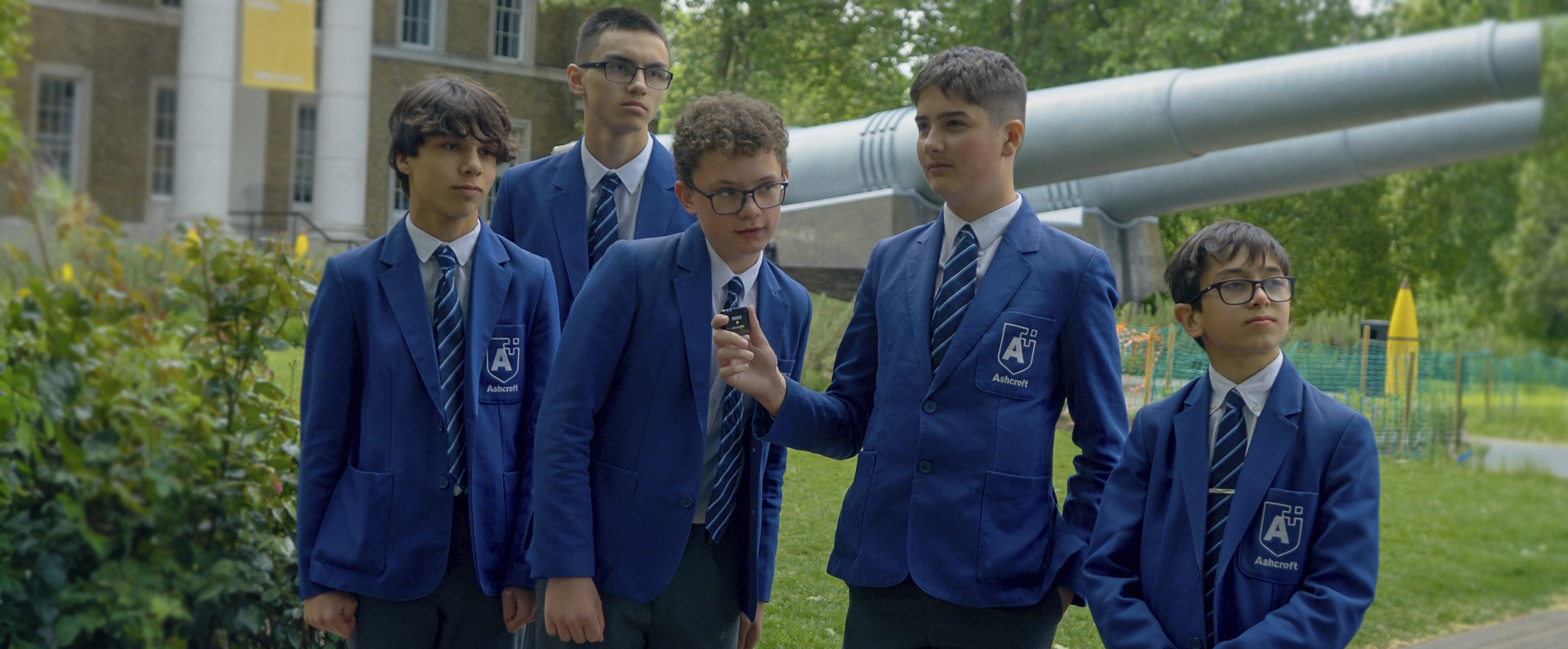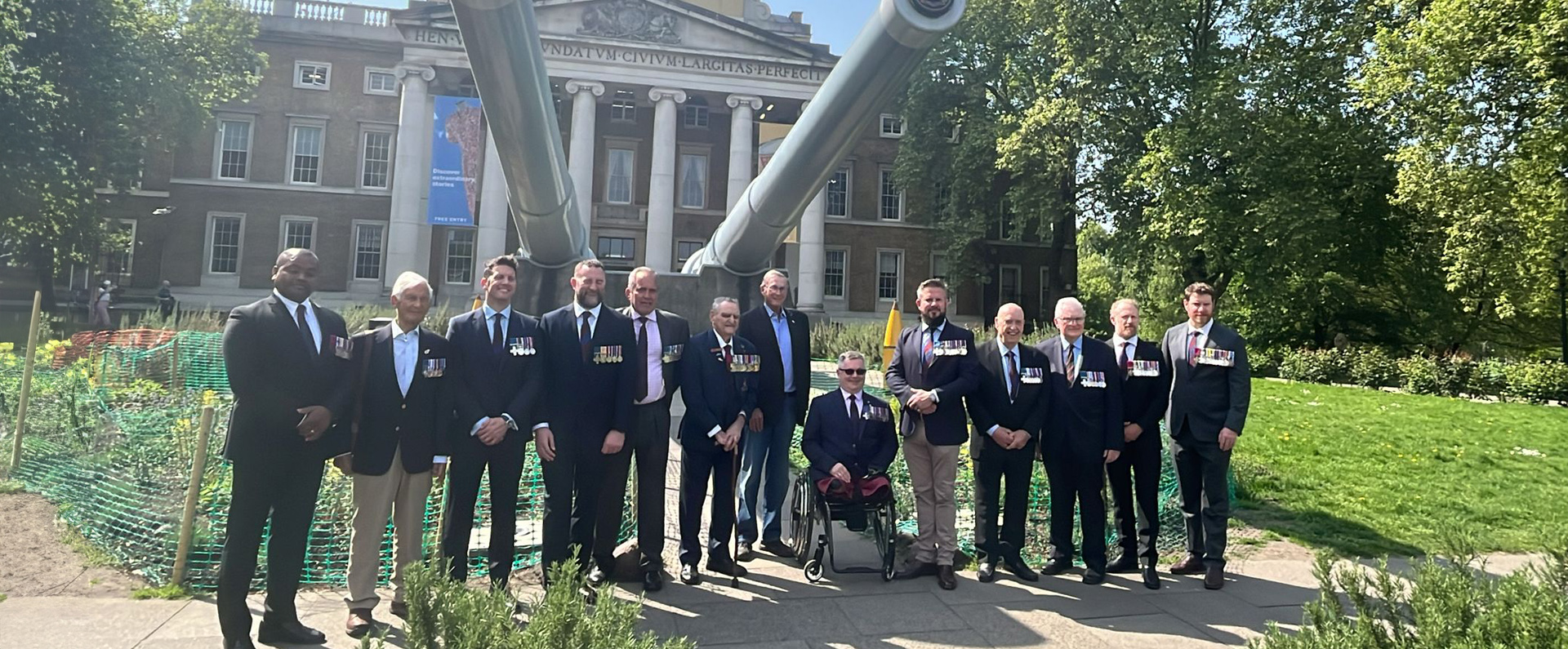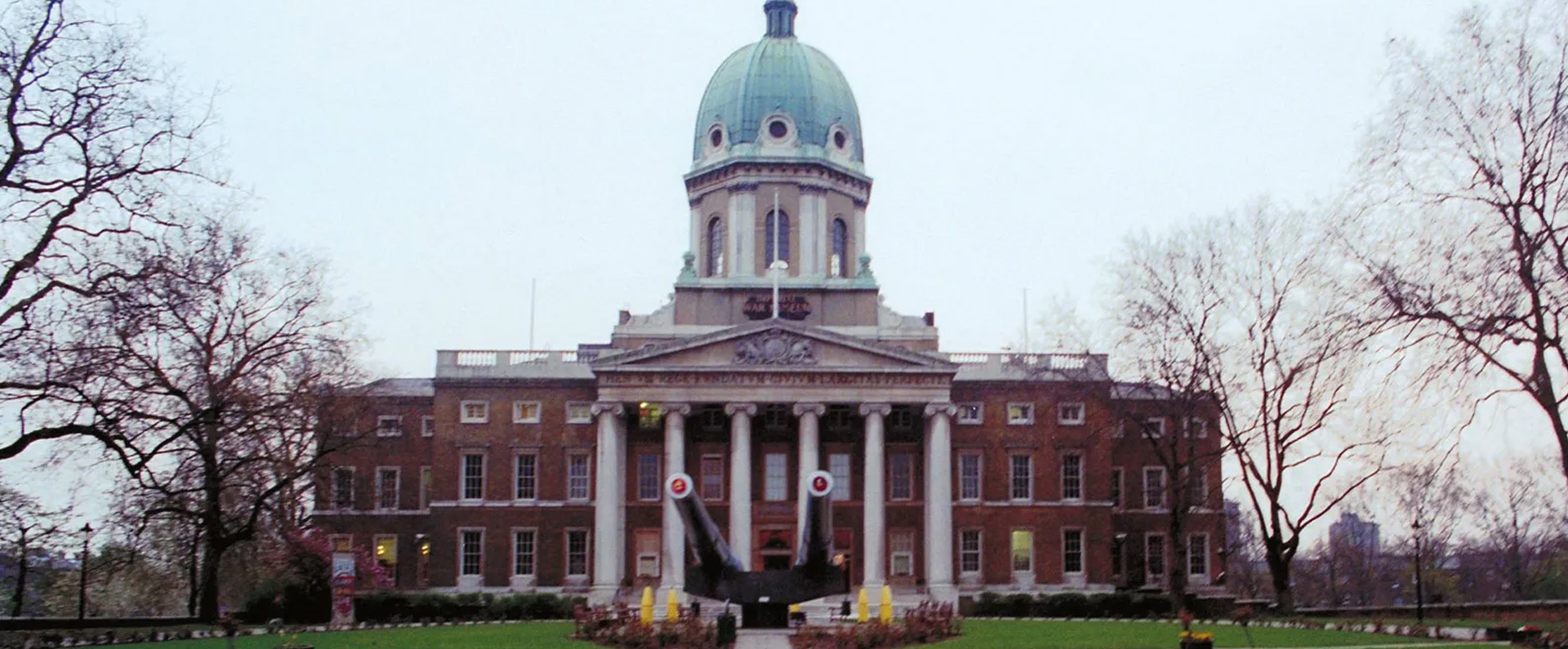
Published on 14 June 2020 in the Mail on Sunday.
It’s Born Free meets James Bond: The heart-stopping story of how Lord Ashcroft hired a crack team of ex-soldiers – using drones and military-grade tracking devices – to nail the criminals behind South Africa’s lucrative captive lion trade.
I CANNOT abide those who are cruel to animals, but the sad fact is that in our digital age, my strong aversion is aroused all too often. I have lost count of the number of people who post on social media platforms such as Twitter so-called ‘kill shots’ of themselves grinning at the camera (or, even worse, kissing their partner) alongside a beautiful animal they have recently slaughtered.
Revelling publicly in the death of a creature in this way is completely alien to me.
People may be brutal through ignorance or by taking shortcuts to save money, but South Africa’s captive-bred lion industry is conscious, intentional cruelty, sometimes carried out with or for pleasure. I cannot think about this without feeling a burning sense of shame. The question is: for how much longer will South Africa allow this industry to prosper?
In a major exposé in this newspaper last year, I revealed details of an undercover mission, Operation Simba, which I had funded in South Africa in 2018 and 2019, which aimed to shed
light on the way this appalling trade is run.
I described the hideous phenomenon of ‘canned hunting’, whereby lions bred in captivity are drugged and released into a relatively small area and then shot by a tourist who has paid many thousands of pounds for the privilege. It is not so much a chase as an utter farce. The photos of people standing triumphantly over these wretched beasts once they are dead are sickening.
I also revealed how once the farm-bred lions have served their purpose, their bones and other body parts are exported for the booming Asian medicine market. At every stage of their lives, these animals are abused and monetised.
Even as cubs they are forced to play with tourists, although they should be sleeping for 16 to 20 hours a day in order to grow and thrive.
Finally, I reported how an undercover team had managed to save one of the lions, Simba, just as he was about to be shot in a canned hunt. I am now paying for him to live out his days in a secure and peaceful location. DESPITE my feelings of euphoria at having saved Simba in the nick of time, it seemed clear that more needed to be done. It was obvious that those who profit by abusing lions are able to operate with great ease in South Africa. I decided to assemble my own evidence through a second covert investigation.
Our findings could then be presented to the South African authorities so pressure could be brought to bear on the perpetrators. And so Operation Chastise was born.
Named after the famous Dambusters mission and involving a crack team of former British Army and security services personnel, it swung into action in April 2019.
The risks of this project cannot be overstated.
The captive-bred lion industry is guarded jealously by its practitioners – many with links to global organised crime – while the value of human life in South Africa is far lower than it is in Britain. The bravery and ingenuity displayed by my team was phenomenal.
Through the recruitment of an undercover agent, a South African lion dealer, they managed to infiltrate this highly lucrative business.
Our double agent, to whom we gave the codename Lister, was able to provide us with video footage of extreme cruelty to lions.
In the meantime, my team used their military expertise to fit secret trackers to caches of lion bones being bought and sold so that their whereabouts could be monitored as they were smuggled out of South Africa.
They also kept Lister himself under constant surveillance by bugging his cars, his phones and his house.
The team’s findings make truly horrifying reading for anybody who, like me, abhors any form of cruelty to animals.
Those involved in the production and export of lion bones also smuggle rhino horn, elephant ivory and the scales of pangolin, the most trafficked animal in the world [and linked to Covid-19, having been sold in the Wuhan wet market in China where the pandemic started]. To my mind, buying any of these is on a par with buying a Class A drug from a dealer.
THE team was in place. Gibby, named after the Dambusters leader Guy Gibson, was the boss. Hopgood, again named after another of the raid’s heroes, was his deputy.
Munro, a Kenyan who spoke many of the local languages, was to play an invaluable role, while Ginger, our electronics expert and drone pilot, would be the equivalent of the James Bond character Q, looking after all the covert kit: cameras, audio recording devices, GPS trackers and any other technical wizardry.
And then, of course, there was Lister. A typical alpha-male Boer farmer in his late 40s, he has a large frame and rough-hewn features. A former policeman, there is certainly something intimidating about him.
We’d learned from contacts that he had already offered his services to another undercover operation, and during an early meeting he insisted to my team that his sole aim for joining the project was to end the cruel practice of killing lions for their bones. As if to prove he was genuine, he offered to show them footage of a lioness which had been shot in a tree.
The film, watched by two of the team on Lister’s phone, made for harrowing viewing.
In it, two men drive a pick-up vehicle into a fenced enclosure. While they speak Afrikaans, the camera pans to a lioness which has climbed into a tree and is perching precariously, looking forlorn and distressed.
The men speak again before a gunshot is fired from the truck. A branch splinters and the lioness roars in pain. She falls to the ground and tries to position the tree’s trunk between herself and her pursuers.
The men in the vehicle shoot into her again and again. They then drive round to the other side of the tree, where the lioness lies panting in a pathetic state, one shoulder shattered and bullet holes pockmarking her flank. Using pistols now, the men try again.
Several shots later, the poor beast, riddled with bullets, finally expires. In this shooting spree, stretched over seven-and-a-half minutes, she is seen being shot ten times while the men chat to each other casually.
Lister, who had made the recording himself, explained that their marksmanship had been deliberately poor as they had not wanted to damage the animal’s skull and thus reduce its value in the bone trade.
Hopgood, who has seen two frontline tours of duty in Afghanistan, was visibly shocked. Blood and suffering were not new to him, but this display of deliberate cruelty turned his stomach.
We later found out that this horrifying event took place at a tourist facility and wedding venue whose professional hunter owners were the ones who shot the lioness so callously that day.
It is appalling to think that these men would tout their property as a wedding venue where they are happy to slowly butcher a defenceless creature. Similarly, it is chilling to think that young children might go to pet lion cubs there.
There can be no justification for such barbarous behaviour, but this is the reality of the captive-bred lion trade in South Africa.
ALTHOUGH my team had huge reservations about working with Lister, the importance of his role as an undercover agent could not be exaggerated: he was well-connected and involved in the trade of live lions and their bones.
Indeed, he had claimed that he was South Africa’s biggest lion dealer. As long as he was kept on a tight rein, he had the potential to produce important material which could, we hoped, be added to our dossier.
At the end of June, he had given Hopgood promising information about some contacts he referred to as ‘serious players in the trade’ from whom Lister had bought lions and tigers.
Lister also said that the man bred ‘ligers’ – a hideous crossbreed of lions and tigers – for bones, as well as selling live ligers to Arab clients for many thousands of dollars.
The question might well be asked: what were tigers doing in South Africa, thousands of miles from their native Asia?
It’s not hard to understand why ligers are popular with bone traders. Able to grow to a length of 11ft and a height of 4ft, a three-year-old liger can be the same size as a nine-year-old lion. Its accelerated growth means it produces more bone more quickly. Once slaughtered, it generates greater profits.
These enormous freaks of nature are, of course, kept well out of sight of holidaymakers at the safari lodge. This is typical of such enterprises in South Africa. Animals that are going to be seen by visitors are kept in good condition. But those bred for the bone trade have to take their chance. Anything goes.
‘It’s not just lions,’ said Karen Trendler, a former inspector with the NSPCA, South Africa’s equivalent of the RSPCA.
‘Tigers are bred and slaughtered for bone on these farms, too. It’s a very hidden industry, fiercely protected. There are areas where you can farm and slaughter lions and nobody will ever know.
‘On some, the lions and cubs in the front or public area are in beautiful condition, but it’s what goes on behind the scenes.
‘This is a huge industry with what could be up to 12,000 lions being farmed in captivity.’
It’s worth taking a look at the mission statement of the lodge where the lioness had been shot, which says its animals are treated lovingly – like royalty.
And yet the evidence provided by Lister proves that, far from being a place where young children and their parents can go and spend time with creatures that are treated like royalty, it supplies big cats to the canned hunting industry and to the illegal lion and tiger bone trade. We later collected video evidence to confirm this.
By early August, my team had developed a decent intelligence picture of the captive lion operation. A diagram of Lister’s known associates was drawn up, providing leads that could be checked on social media platforms. Another name that cropped up frequently was ‘Michael’, a mysterious Asian bone-dealer described by Lister as ‘not a person to cross’, for whom he was busy collecting lion parts. At an agreed time, these would then be dispatched from Johannesburg International Airport.
When pressed for details, however, Lister would not be specific either about where he would take the grim haul prior to the flight, or when the drop-off would take place, maintaining that he was only ever given such information shortly beforehand.
He did, however, say that Michael paid corrupt airport staff to wave his contraband boxes through without being searched.
If this is even remotely accurate, it is a devastating indictment of South Africa’s so-called customs patrols at its international airports, which raises major questions about the robustness of the country’s approach to tackling the bone trade.
To help us monitor the shipment’s journey, Lister agreed that trackers that had been hidden in a lion skull by my team would remain in place.
BY THE start of September, the bone shipment destined for Michael remained on Lister’s property.
While my team waited for it to be moved, they explored downtown Johannesburg’s traditional medicine market to try to establish whether any lion parts from captive-bred operations ended up there.
It was immediately obvious that the market is not policed in any serious way and neither, on the strength of the team’s visit, is the law enforced regularly, such is the breadth of dead specimens being traded openly. Leopard and lion skins abounded, as did pangolin skins, big-cat skulls and even rare vulture heads.
One of my operatives took pictures with an iPhone while his colleague bought time by handing 50-rand notes (worth just over £2) to any stall-holder who raised questions. Word soon spread that a couple of Europeans were photographing cat skins.
After several minutes, a crowd started to follow them around the maze of market stalls. As my operatives moved towards the exit, they saw a huge male lion skin hanging from one of the
market roof’s supporting pillars. All questions about this skin were batted away by the stall-holder.
When one of our team asked the seller if he would stand in front of the skin for a photo, he refused, threatening to put a fatal Zulu curse on him.
They soon left, pleased to have obtained solid confirmation of the illegal wildlife trade being conducted openly in a public place in South Africa’s biggest city without hindrance from the authorities.
In the meantime, further checks were run on those believed to be associates of Michael. My team discovered the existence of a network of Russian nationals in South Africa, each with links to South Africans who themselves had connections to various professional hunting outfits that had form for unethical practices.
A larger picture was beginning to take shape.
AS AUTUMN approached, it was decided that in order to have some control over how and when the various pieces of this complex jigsaw came together, one of the team would have to work alongside Lister.
Munro was chosen for this delicate and high-risk task. He could speak several indigenous African languages, including Tswana, which is widely used in North West Province.
Back in the summer, Lister had told us about a potential deal in which he was involved. This would involve wild lions in neighbouring Botswana being poisoned so that their cubs could be trafficked into South Africa.
The bones are sold into the trade and the cubs are brought into South Africa’s tourist market to widen the gene pool of the captive population. The entire process gives the lie to those supporters of the farmed lion industry who insist that it is good for conservation, and takes pressure off the wildlife population.
In early October, Lister told the team that a poaching trip in the Kgalagadi Transfrontier Park had been arranged.
The men he was going with were serious criminal operators who knew how to kill wild lions specifically for the bone trade.
The plan was to poison the animals or shoot them in their stomachs in order to avoid damaging any highly valuable bone tissue. Both methods guarantee they would make as much money as possible after the lions had suffered a slow and painful death.
It was a gruesome prospect, but for my team, collecting such evidence would be a coup.
On the morning of October 23, Lister crossed the border into Botswana. Along with Munro (disguised as a farm-worker), they headed to the rendezvous with Lister’s poaching contacts
close to the village of Kokotsha. Munro noticed that Lister was very friendly with the poachers, but he was soon outraged to discover that Lister had brought with him some poison to give
these two crooks.
Munro stepped in before Lister had the opportunity to hand it over to the poachers, warning him that if he went through with his plan, he would be filmed doing so and would then be reported to the authorities.
The group set off to find the lions which the poachers had tracked previously.
They struck gold. One of the poachers wanted to follow the pride, but Munro called a halt to proceedings, using Lister’s obvious lack of fitness as an excuse.
Crucially, he had confirmed that the poachers were prepared to commit wildlife crime – and for the purposes of our investigation that was sufficient.
Based on what they witnessed, neither Munro nor Lister had any doubt that the pair were practised players who had killed wild lions before. Operation Chastise continued to gain momentum. On November 3, Lister had another meeting with the team to outline proposals for his next trip to Botswana to link up with the lion poachers again. He also talked about a plan to smuggle several live cheetahs into the country, along with a cache of lion bones.
At the beginning of December, however, Lister told the team the Botswana operation would have to wait until January as he had to go to Namibia.
This was the last time they had any contact with him.
That same day they received a tip that a middle-aged man had walked into Kimberley Police Station in the Northern Cape and told officers about an illegal wildlife trafficking operation that he knew of involving a Botswana national.
He gave a number of details and had apparently spoken about the bone sets to which my team had fixed trackers.
It was obvious that the ‘walk-in’ was Lister. He had doublecrossed everybody.
Without him, Operation Chastise could not function, and the only course of action now was to wind it up.
It didn’t matter. We had more than enough information to give to the police, allowing them to open their own investigation. All that remained now was to present our findings.
But as I reveal in the facing panel, this did not quite go as we had anticipated…
Read this article on MailOnline
Purchase Unfair Game: An exposé of South Africa’s captive-bred lion industry
To find out more, visit:
LordAshcroftWildlife.com


